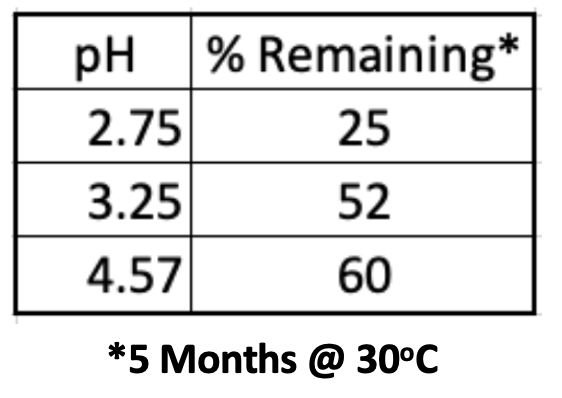
Ever had a Diet Coke that tasted awful—sour, metallic, like death itself? (1) There’s a scientific reason for that. Over time, aspartame, the artificial sweetener in Diet Coke, breaks down due to a chemical reaction known as ester hydrolysis. Here’s what’s happening inside that can.
Since artificially sweetened drinks are known to be ruthless killers (2), you might assume that whatever's happening in that can is some kind of chemical horror show. But here’s the good news: nothing harmful is happening. The bad news? You just spewed all over the guy sitting at the next table—who also happens to be a Mixed Martial Arts fighter in a $4,000 Armani suit on his way to a court-mandated anger management class. He was not pleased.
WHAT CAUSED THE SPEWAGE?
Perhaps you can take some small comfort, as you are being hooked up to assorted machines in your favorite trauma unit, in that what got you into this unfortunate situation was a chemical reaction invented by the Babylonians around 2800 BC – the hydrolysis of an ester. Back then, the ester used was olive oil and the product they made was the first soap (hence the term saponification). It's essentially the same reaction (Figure 1) that made the Diet Coke taste nasty (3).

Figure 1. The hydrolysis of an ester, in this case ethyl acetate. Ethyl acetate reacts with water and breaks down into its components – acetic acid and ethanol. The rate of this reaction depends on several variables and is discussed below.
WHY ASPARTAME?
Figure 2 shows the chemical structures of some common artificial sweeteners. Note that only aspartame contains an ester group (red circle), making it susceptible to acid- or base-catalyzed hydrolysis. None of the other sweeteners contains an ester, so they remain stable under the conditions that aspartame breaks down in the stomach.

Figure 2. Structures of some common artificial sweeteners. Source: Stack Exchange.
The rate of the hydrolysis reaction of aspartame (found in Nutra Sweet, Equal, others) depends partly on the pH of the soda solution (Table 1). At pH 3.25, which is virtually identical to that of Diet Coke, about half of the aspartame will be gone after 5 months in a warm room.

Table 1. Stability of aspartame at different pH values after five months at 30º C (86º F). Source: International Journal of Food Properties
The temperature at which the drink is stored also affects the stability of the aspartame (Table 2). Hot warehouses are bad.

Table 2. The impact of storage temperature on aspartame stability at pH 3.25. In a cool room, most of the aspartame remains after five months. In a hot room, all of it is gone.
WHAT HAPPENS TO THE ASPARTAME, AND WHY DOES THE SODA TASTE ICKY?
Like the reaction in Figure 1, the hydrolysis of the methyl ester group in aspartame produces a carboxylic acid and an alcohol. In this case, the carboxylic acid is called phenylalanylaspartic acid and the alcohol is methanol (4).

Figure 2. The hydrolysis of aspartame
But, it's aspartame, not phenylalanylaspartic acid, that is responsible for the sweet taste. When a Diet Coke sits around long enough so that the methyl ester has been hydrolyzed the sweet taste will be gone. But this is not the same as spoiled food. Phenylalanylaspartic acid may taste awful, but it's not some hideous poison. Far from it. This new chemical will be found in your stomach every time you eat protein. It would be "fair" to call it food. Here's why.
Proteins and peptides (5) are broken down in the stomach by a group of enzymes called peptidases, which break an amide (carbon-nitrogen) bond, forming the individual amino acids that were put together in the first place (Figure 3).

Figure 3. Phenylalanylaspartic acid, just like dietary protein, is broken down by peptidases to form aspartic acid, and phenylalanine – two of the 20 amino acids that make up proteins. All 20 amino acids are necessary for life.
So, whether you consume aspartame, phenylalanylaspartic acid, or protein in a chicken leg, your body will digest them and will form phenylalanine and aspartic acid. This is why neither the sweet nor the sour diet soda is harmful; your body just sees them as food.
Try telling that to the Mixed Martial Arts guy (he collects felonies as a hobby) who just put you in a full-body cast.
NOTES:
(1) I arbitrarily chose Diet Coke because a) I like it and b) it contains aspartame. Some dissolution of the aluminum may cause a metallic flavor.
(2) That's a lie. Artificial sweeteners, when consumed at levels approved for use in foods and beverages, have been extensively studied and shown to be safe, despite what the Internet says.
(3) Esters hydrolyze much faster under basic conditions. The Babylonians heated caustic soda (sodium hydroxide, lye) with olive oil to make soap. The same method is used today. The process is called saponification.
(4) Small amounts of other byproducts form when aspartame is hydrolyzed. These are beyond the scope of this article.
(5) Peptides are chains containing 2-50 amino acids hooked together by amide bonds. When larger numbers of amino acids are present then it is called a protein. A bit arbitrary.



